Last updated on: October 2, 2023
Pickleball is a popular paddle sport that combines elements of tennis, badminton, and table tennis. Choosing the right pickleball paddle is important for maximizing your performance and enjoyment of the game. One of the key factors to consider is the weight of the paddle. But is a lighter or heavier pickleball paddle better? There are pros and cons to both. So let’s take an in-depth look at the pros and cons of both.
Pros of a Lighter Pickleball Paddle
Easier to maneuver and react quickly
A lighter paddle weighs less, so it takes less effort to swing and maneuver. This makes it easier to react quickly to shots and move the paddle into position.
Quicker swing speed
Less weight means you can swing the paddle faster. This allows you to generate power on shots without having to swing as hard.
Less fatigue
Fatigue can set in quickly during a pickleball match. A lighter paddle reduces strain on your arms, shoulders, and wrists, allowing you to play longer without getting as tired.
Good for beginners
Beginners tend to lack the strength and stamina needed for a heavier paddle. A lightweight paddle is easier to control for those new to the sport.
Cons of a Lighter Pickleball Paddle
Less power and control
The flip side of a quicker swing is that it can be harder to control and generate as much power. Heavier paddles provide more stability and momentum.
More arm strain
While a lighter paddle reduces fatigue on the arms, more of the work is placed directly on your arm and wrist muscles compared to the use of body rotation with a heavier paddle.
Less reach/leverage
A heavier paddle with more weight distributed away from the handle provides more reach and leverage for shots at a distance.
Can feel unstable
An extremely lightweight paddle can feel flimsy or unstable, especially when countering strong shots.
Pros of a Heavier Pickleball Paddle
More power and control
The weight of a heavier paddle allows for heavier, more accurate shots with more spin and control. The weight provides momentum.
Added stability
The heft of a heavier paddle makes it move more smoothly and deliberately, with less flutter or wobble.
Reach and leverage
A longer, heavier paddle provides more reach and leverage for two-handed backhand shots or quick blocks at the non-volley line.
Better feel
A heavier paddle provides more tactile feedback and “feel” on ball contact, allowing better control.
Durability
More weight often indicates a more durable, higher-quality construction less prone to twisting or cracking over time.
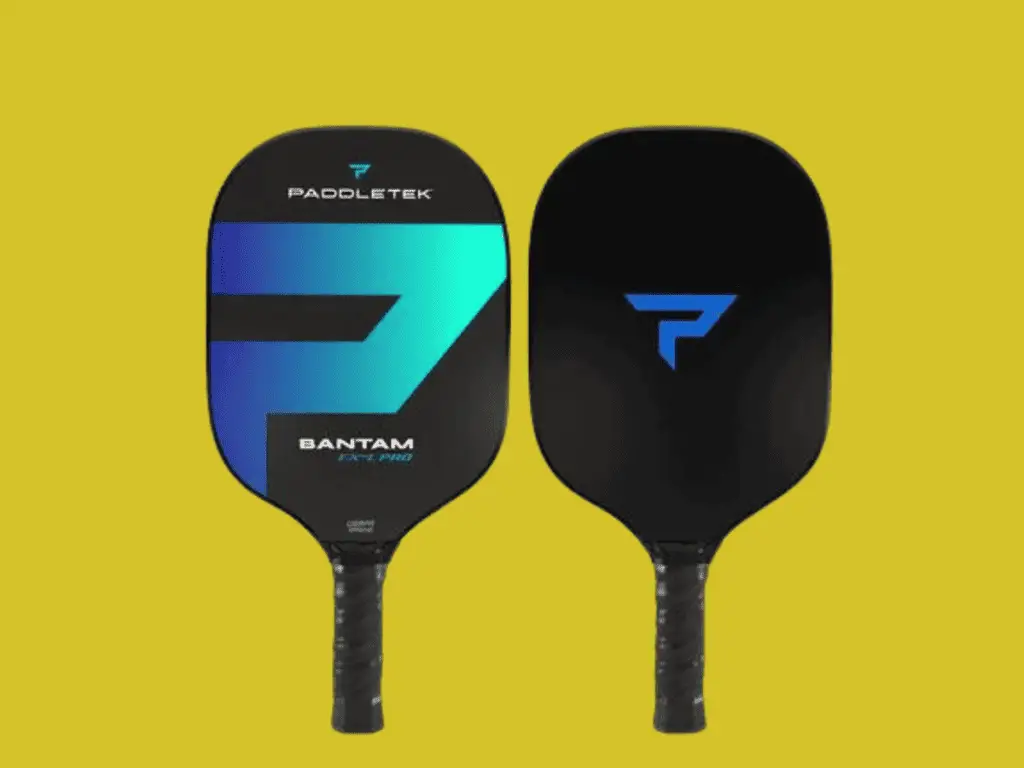
Cons of a Heavier Pickleball Paddle
Slower swing speed
It takes more effort and energy to swing and maneuver a heavy paddle with quick acceleration or reaction time.
Fatigue
A heavier paddle can more quickly fatigue the arms, shoulders, and wrists as muscles work harder to wield and control the weight.
Strain and injury risk
The constant swinging of a heavy paddle can put more strain on joints and tendons and increase injury risk in the arms and shoulders.
Difficult for beginners
Beginners and younger players may lack the strength and stamina to use a heavy paddle effectively, leading to frustration.
Comparing lighter and heavier pickleball paddles:
| Lighter Paddle | Heavier Paddle | |
| Weight | 6.5 – 8 oz | 8.5 – 17 oz |
| Power | Less power | More power |
| Control | More control | More stability |
| Maneuverability | More maneuverable | Less maneuverable |
| Swing Speed | Faster swing | Slower swing |
| Fatigue | Less fatigue | More fatigue |
| Skill Level | Better for beginners | Better for advanced |
Pickleball Paddle Weight Regulations
Official pickleball rules limit paddle weights to help standardize play across different paddle types. The regulations state:
- The weight of a pickleball paddle must not exceed 17 ounces (~0.48kg).
- There is no minimum weight, but most paddles weigh around 7-8 ounces.
- Weight must be evenly distributed throughout the paddle face.
These regulations prevent excessively heavy paddles that could overpower shots, while still allowing for personalized paddle weights. Most picklers should look for a paddle between 7 and 10 ounces to complement their play style and strengths.
Recommendations by Skill Level
As a general guideline, here are some weight recommendations based on skill level:
Beginners
- Lighter paddle around 7.5 – 8.5 oz
- Gives you better control as you work on technique
- Allows you to develop quick reflexes and wrist action
- Heavier paddles could slow development and cause arm issues
Intermediate Players
- Mid-range weight around 8 – 9.5 oz
- Balance of power and control as skills improve
- Opportunity to experiment with heavier paddles
- Match paddle weight to your personal playing style
Advanced Players
- Heavier paddle 9.5 oz or greater
- Takes advantage of your strength and experience
- Extra power on smashes and drives
- Ability to handle heavier paddle without arm fatigue
Comparing paddle weights for different player attributes:
| Player Attribute | Recommended Paddle Weight |
| Beginner | 7 – 8 oz (lighter) |
| Advanced player | 8 – 10 oz (heavier) |
| Taller player | 8 – 10 oz (heavier) |
| Shorter player | 7 – 8 oz (lighter) |
| Focused on control | 7 – 8 oz (lighter) |
| Focused on power | 8 – 10 oz (heavier) |
| Playing singles | 7 – 8 oz (lighter) |
| Playing doubles | 8 – 10 oz (heavier) |
| Flexible wrist | 8 – 10 oz (heavier) |
| Weak grip | 7 – 8 oz (lighter) |
| Existing arm/wrist injury | 7 – 8 oz (lighter) |
Determining the Right Pickleball Paddle Weight
With pros and cons on both sides, how do you determine what paddle weight is right for your game? Here are some key factors to consider:
Your strength and fitness level
If you have less paddle experience, arm strength, or general fitness, a lighter paddle around 7-8 ounces will be easier to start with. More active players can handle heavier 9-10 ounce paddles.
Your height and reach
Tall players with longer reaches may benefit from a longer, heavier paddle for extra leverage on distant shots. Shorter players often favor lighter paddles.
Your game style
Do you focus on control shots or aggressive drives and smashes? Light paddles favor control, heavy paddles provide power. Defensive vs. offensive preferences also matter.
Double vs. singles play
Singles put more emphasis on quick position changes and reactions favoring lighter paddles. Heavier paddles provide stability for doubles.
Your paddle grip and wrist flexibility
A flexible wrist and ergonomic grip can help wield a heavier paddle. Weaker grips benefit from lighter paddles.
Injuries or joint issues
Existing injuries or weakness in the arms, shoulders, or wrists make a strong case for using a lighter-weight paddle.
No single paddle weight is inherently better – it comes down to finding the right match for your physical ability, style of play, and goals on the pickleball court. The best way to determine your ideal paddle weight is to experiment and find what feels most responsive and usable over time.
Comparing Popular Pickleball Paddle Weights
To give a sense of pickleball paddle weights available, here is an overview of some top models across the lightweight, mid-weight, and heavyweight spectrum:
Lightweight Paddles (6.5 – 7.6oz)
- Selkirk Amped S2: Fiberglass face, 6.5-7.6oz
- Gamma Micronite: Polymer honeycomb, 6.5-7.2oz
- Engage Poach Advantage: Polymer core, 7.3oz
Mid-weight Paddles (7.8 – 8.5oz)
- Onix Graphite Z5: Nomex core, 7.8-8.3oz
- Franklin X-40: Aluminum core, 8.5oz
- Selkirk Amped Invikta: Fiberglass face, 8.1-8.5oz
Heavyweight Paddles (8.7oz – 17oz)
- Prolite Crush PowerSpin: Polymer core, 8.7-9.2oz
- Selkirk Amped Epic: Polymer core, 8.8-9.4oz
- Engage Pursuit: Graphite face, 9.2oz
This shows the range of weights available across different materials like polymer, fiberglass, aluminum honeycomb, and graphite. While ultra-light and heavy paddles exist, most players will perform best with a mid-weight paddle in the 7 to 9 ounce range.
FAQs on Pickleball Paddle Weights
What is the average pickleball paddle weight?
The average paddle weight is around 7.8 to 8.2 ounces. Many recreational players find this middle ground ideal for balancing control and power.
How much does a regulation pickleball paddle weigh?
By rule, regulation pickleball paddles must weigh between 6 and 17 ounces. Most weigh between 7 and 10 ounces.
Are pickleball paddles getting lighter?
Yes, newer paddle technologies and materials allow for lighter pickleball paddles without sacrificing power and durability. The average weight has trended lower in recent years.
Can heavy paddles cause tennis elbow in pickleball?
Yes, repeatedly swinging a heavy paddle can strain the tendons in the elbow and lead to tennis elbow or other overuse injuries over time. Proper technique and regular rest can help prevent injuries.
Are there weights you can add to paddles?
Yes, some paddles have holes to add removable weights around the edge or handle. This allows customizing the swing weight and balance. Added weights must keep the total under 17oz.
What is the lightest, legal pickleball paddle?
The lightest legal paddles can weigh as little as 5 or 6 ounces. However, these ultra-light paddles are rare and usually not as well-balanced or durable. Most players should not go below 7 ounces.
What is better for control – lighter or heavier paddle?
Lighter paddles, around 7-8 ounces, generally provide better control on shots. The lighter weight allows you to make more nuanced strokes with better touch.
What paddle weight is best for beginners?
Beginners are best suited to lighter paddles in the 7.5-8.5 ounce range. The lighter weight gives beginners more control as they work on swing mechanics and ball placement.
Is a heavier or lighter paddle better for a spin?
A lighter paddle, around 7-8 ounces, allows better wrist action to help generate topspin and slice shots. Heavier paddles provide power but reduce ability to create spin.
Is a heavier or lighter paddle better for power?
A heavier paddle, over 9 ounces, will provide significantly more power on drives and smashes. The extra mass generates momentum through the ball for more force.
Does paddle weight affect arm fatigue?
Yes, a heavier paddle requires more exertion and can cause arm fatigue quicker, especially during longer matches. Lighter paddles reduce strain for less arm tiredness.
What grip size should I use with a heavier paddle?
If using a heavier paddle, opt for a larger grip size to provide more stability. A grip that is too small paired with a heavy paddle head can lead to fatigue quicker.
Should you use a wrist brace with a heavier paddle?
It’s reasonable to use a wrist brace to support joint strain when wielding a heavier paddle for extended play. But overuse injuries could still occur over time.
What age group uses heavier pickleball paddles?
Heavier paddles over 9 ounces are more often used by advanced and professional adult players. Older seniors and juniors are better suited to mid-weight paddles.
Can heavy paddles cause injuries?
Repetitive use of a heavy paddle can lead to elbow, wrist, and shoulder overuse injuries if proper strength training is not maintained. Lighter paddles help prevent injuries.
Conclusion
The choice between a lighter or heavier pickleball paddle involves balancing factors like swing speed, control, power, reach, and minimizing fatigue. While many players start with lighter paddles around 7-8oz, the best weight comes down to finding the right match for your physical ability, play style, and experience level. Trying out paddles in your weight range allows you to get a feel for what works best. Most players settle into a mid-weight range paddle between 7 and 9 ounces. Keep an open mind, and you will find the ideal paddle weight to elevate your pickleball game.

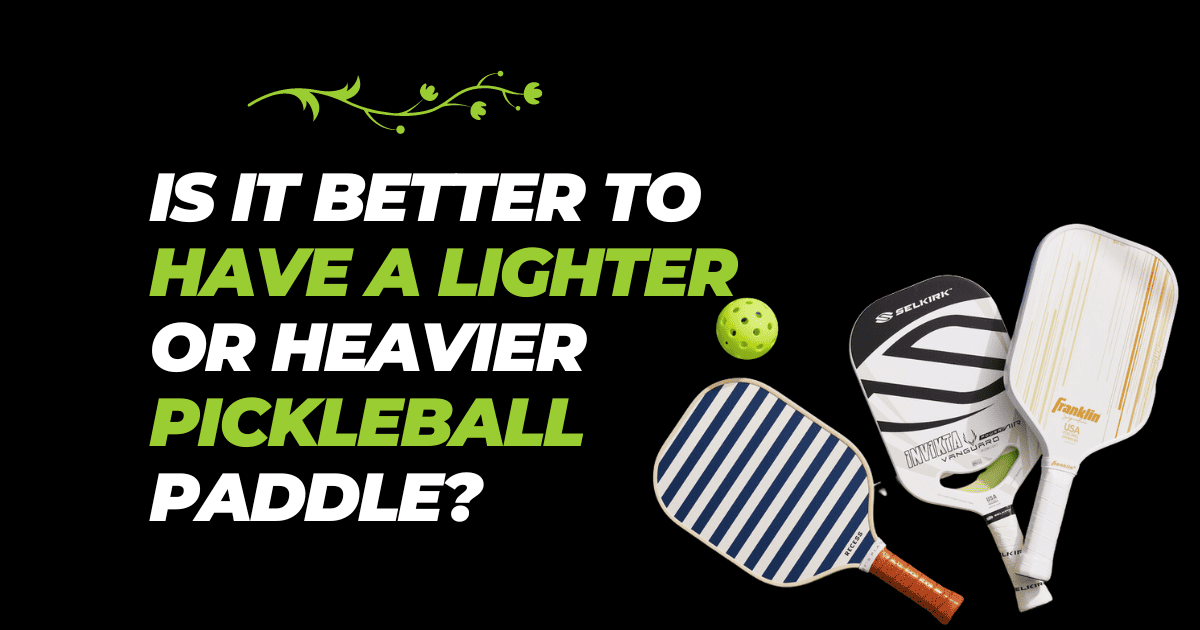
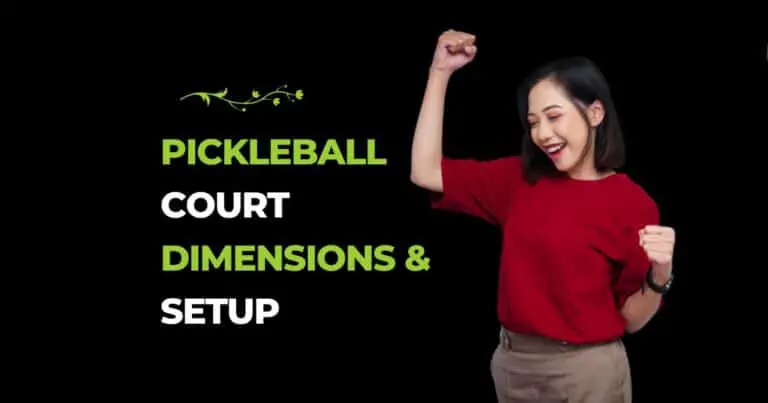

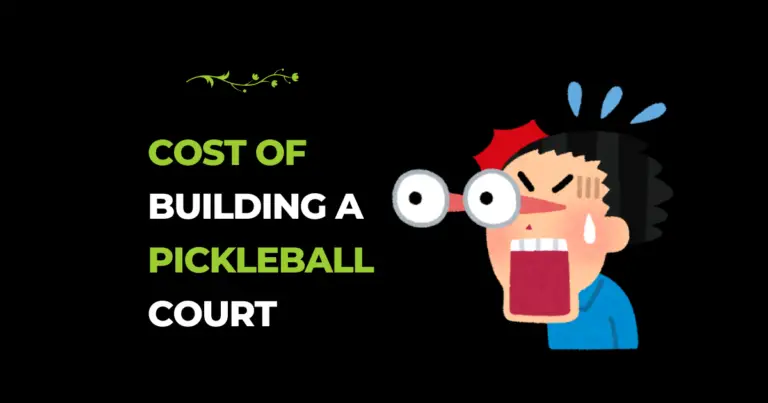
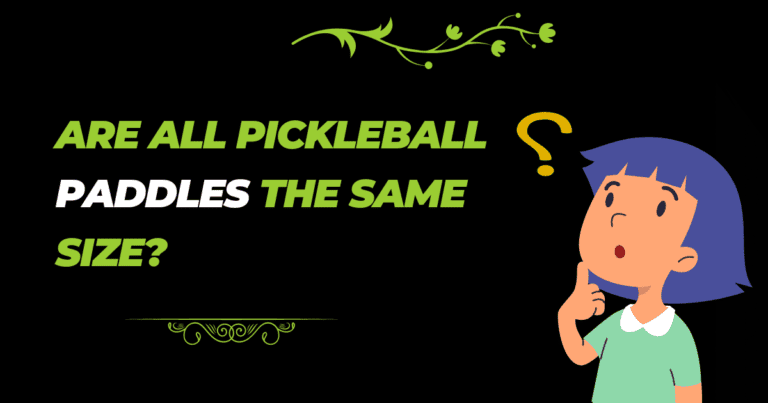
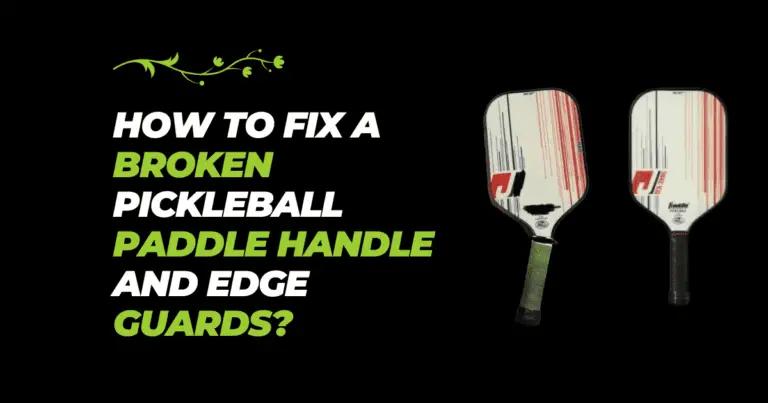
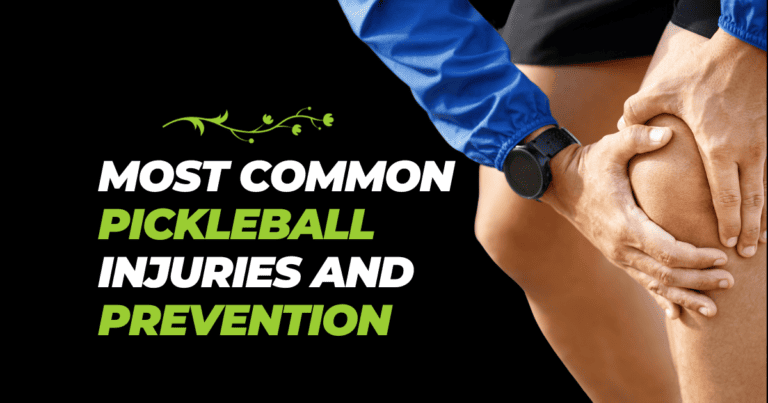
2 Comments